Sushi menus are laden with complications. First, you need to pick the kind of sushi you want to eat: would you prefer a Maki or Nigiri? Oshi or Inari? The choices are endless. Then come the fillings. And the condiments. And just what does one do with that sliced ginger (hint: you NEVER put it on the sushi!) And woe betide if you are supposed to customise your own platter. With the server and your fellow diners watching. Time to bring in the experts.
Let’s begin with the kinds of sushi. While we usually think of this Japanese dish as a simple of vinegared rice wrapped up in a strip of seaweed, sushi actually takes several forms. Some kinds of sushi don’t even have a smidgen of seaweed. Let’s take a look.
Maki Sushi
Also known as makizushi, norimaki or ‘sushi roll’, this is the most popular form of sushi. In most cases, Maki has vinegared rice and other ingredients (like octopus, tuna, cucumber or asparagus) tightly rolled in a sheet of nori (seaweed). These are the easiest to eat, sans spillage.
In a fusion restaurant, the nori may be replaced by a fried egg, cucumber slices, shsiso (perilla) leaves or soy paper.
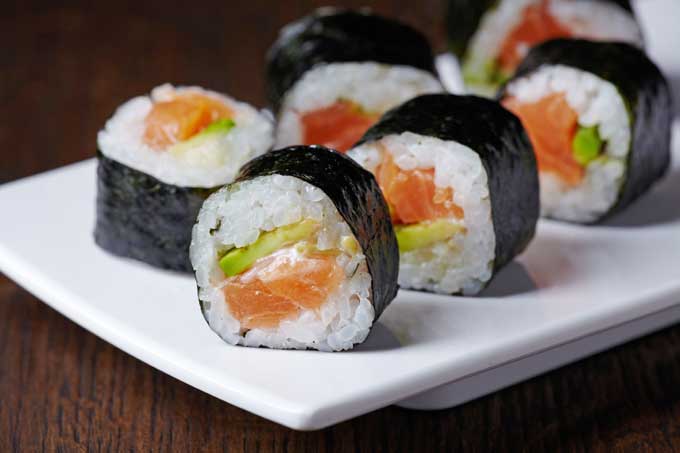
Maki sushi – specifically, this could be hosomaki, chukka or futomaki, all of which differ only in terms of width and number of toppings
More authentic Japanese restaurants may use a further subdivision of maki, which includes:
- Hosomaki: A thin roll, with rice on the inside and nori on the outside; served cut into 7-8 pieces
- Chumaki: A medium-width roll, with rice on the inside and nori on the outside; served cut into 7-8 pieces
- Futomaki: A thick, fat roll of sushi (about 2 inches in diameter) that has two or more types of fillings, with rice on the inside and nori on the outside; served cut into 7-8 pieces
- Uramaki: An inside-out sushi roll, with rice on the outside and nori on the inside; usually comes with two or more fillings in every piece. This one is essentially an American invention, for people who don’t like seeing the seaweed up-front. The rice may be studded with a variety of seeds or other flaky toppings.
- Temaki: Also known as a ‘hand roll’, this is a cone-shaped roll wrapped in nori, with one end sealed off and the other one open. Warning: this is the messiest kind of maki.
Nigiri Sushi
Also known as nigirizushi, which translates as “hand pressed sushi”, this contains a small, oblong mound of vinegar rice topped with a slice of fish (called the neta) or vegetables. Salmon, tuna, cooked shrimp, mackerel and eel are the most common toppings.
Sometimes, when the toppings are super-slippery, a strip of nori is wrapped around the nigiri.
This is usually the most expensive form of sushi and also the messiest to get from plate to mouth.
Gunkan-maki
Directly translating as “battleship roll”, gunkan-maki has a clump of vinegared rice surrounded by a strip of nori, so that toppings (usually fish roe) can be placed on top without falling off. The end result is said to resemble a battleship but I think it looks more like a cup.
Oshi Sushi
Also called oshizushi or hako-sushi, this “pressed sushi” comes from Osaka in south-central Japan. It is made with a sushi press – a wooden, box-shaped mold known as oshibako. The toppings are laid at the bottom of the mold and then covered with sushi rice. Finally, the lid is pressed down to create a firm, rectangular block of sushi that’s cut into pieces before serving.
Chirashi Sushi
Also called chirashizushi, bara sushi or gomoku sushi – all of which loosely translate as “scattered sushi” – this sushi is served as a bowl of rice topped with seafood, mushroom and vegetables. Chirashi is extremely popular in Japanese homes as it forms a perfect vehicle for leftovers and doesn’t require any sushi-pressing skills.
Chirashi can be further sub-divided into:
- Edomae chirashizushi: Topped with uncooked ingredients arranged artfully on top of the sushi rice
- Gomokuzushi: Cooked or uncooked ingredients mixed into the rice
- Sake-zushi: The rice is mixed with rice wine rather than rice vinegar, then topped with seafood, mushrooms, bamboo shoots and shredded omelette
Inari Sushi
Called inarizushi in Japan, this “stuffed sushi” consists of vinegared rice stuffed into a pouch of deep fried tofu (abura-age). It’s usually sweet-tasting and is one of the most inexpensive forms of sushi.
Bonus trivia: Inari is the fox God of Japan’s Shinto religion and because foxes are traditionally believed to like abura-age, he lends his name to this sushi.
Onigiri Sushi
Also called omusubi or “rice ball” sushi, onigiri is basically 2-3 fillings rolled up into a ball of regular steamed rice. Sometimes the ball is wrapped with nori. Debates rage on whether this is a type of sushi at all, given the absence of vinegared rice.
Sushi vs Sashimi
Sushi and sashimi are NOT interchangeable. And sashimi is NOT a form of sushi. In fact, sashimi means “thinly sliced protein” and refers to thinly sliced pieces of raw fish. It does not contain any rice, which is an essential ingredient of sushi.
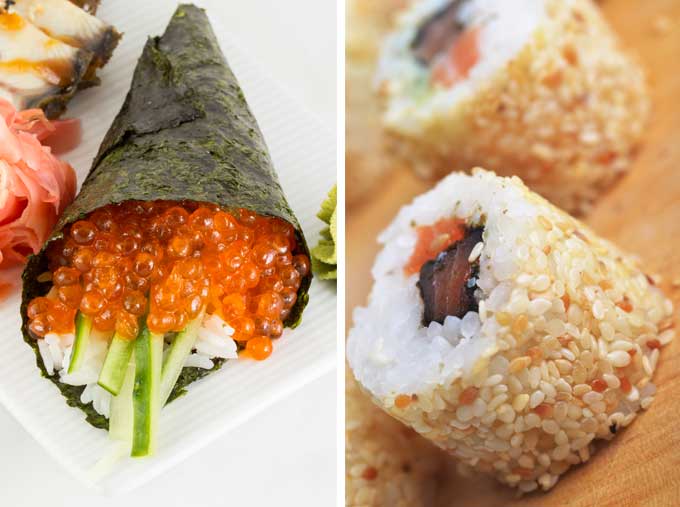

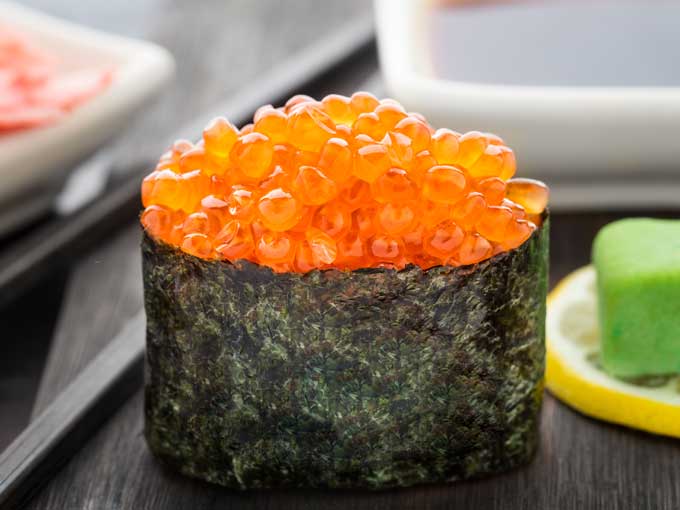
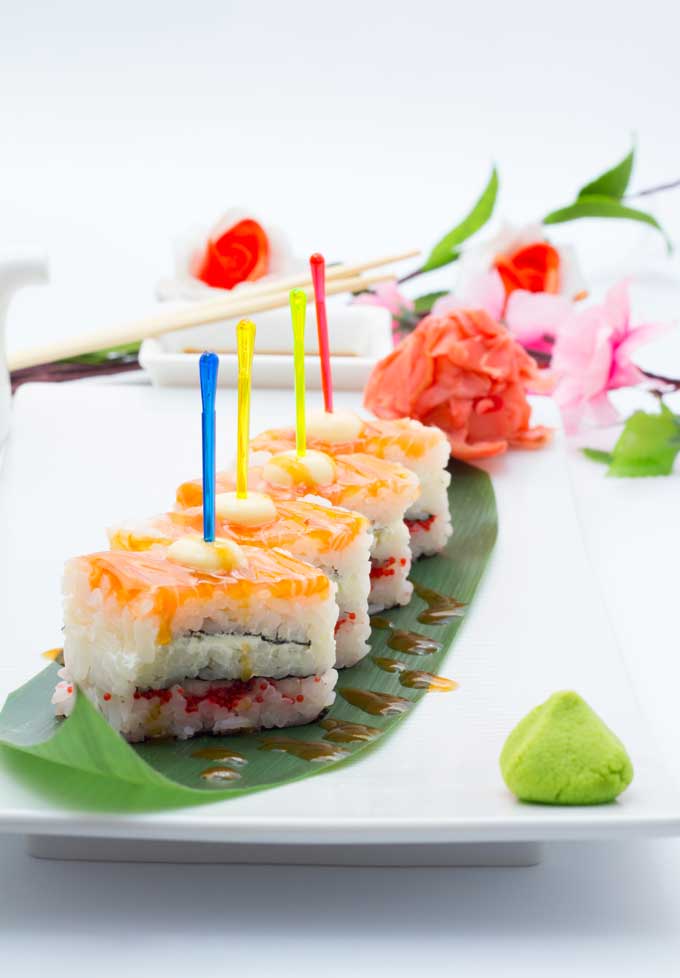
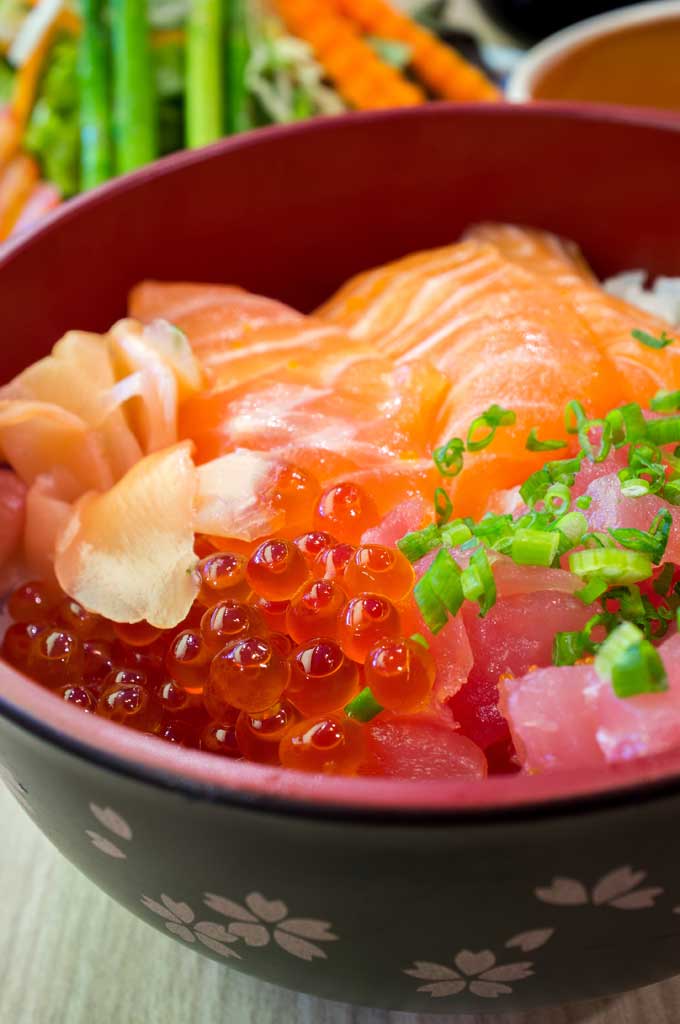
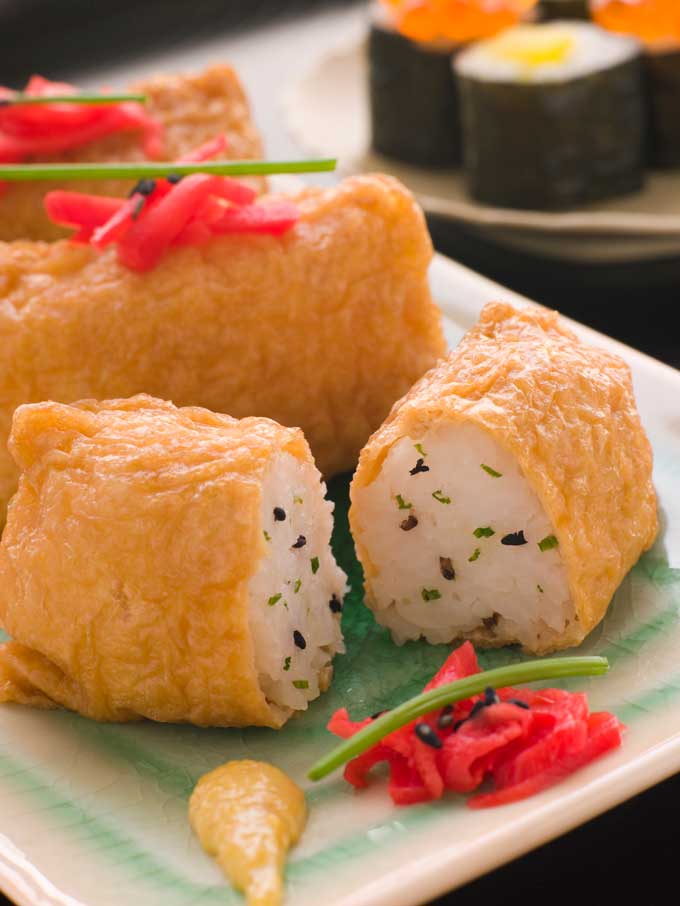
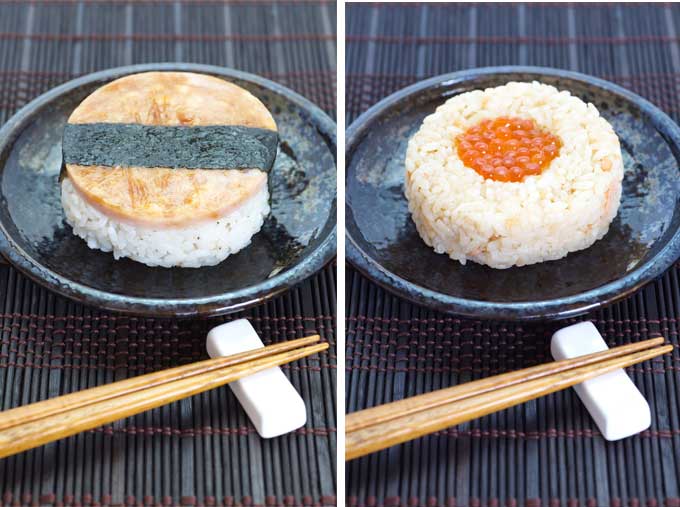
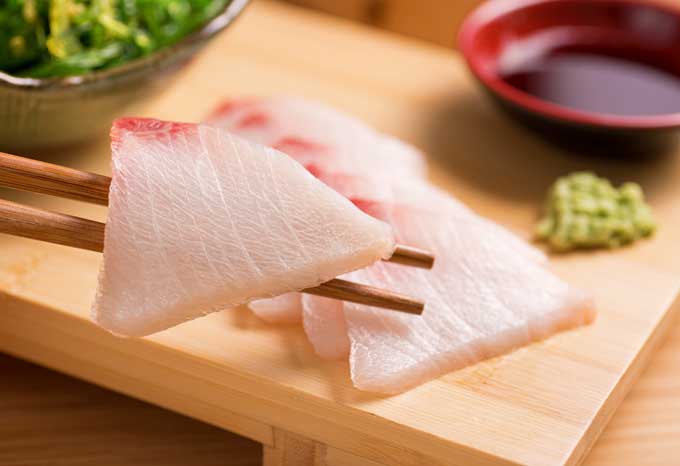
Great guide. Thank you. I love both Sushi and Sashimi.
Great guide to sushi! I love eating it but usually only have make or nigiri. Growing up my best friend (who is half Japanese) had a grandma who always made “bag sushi” and I never thought it was a real thing – turns out it’s inari! Now I know what to look for when I go out! thanks!!